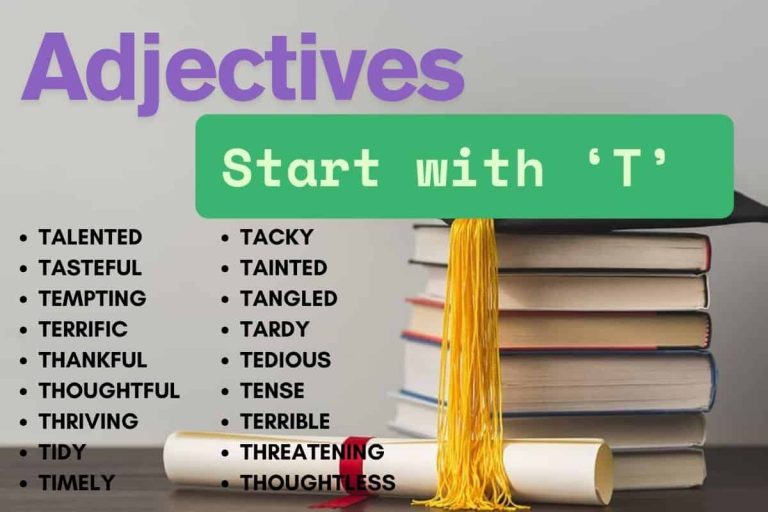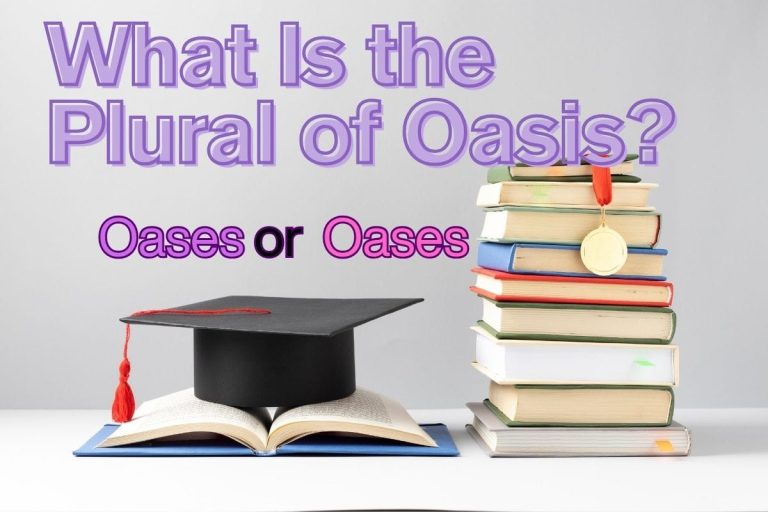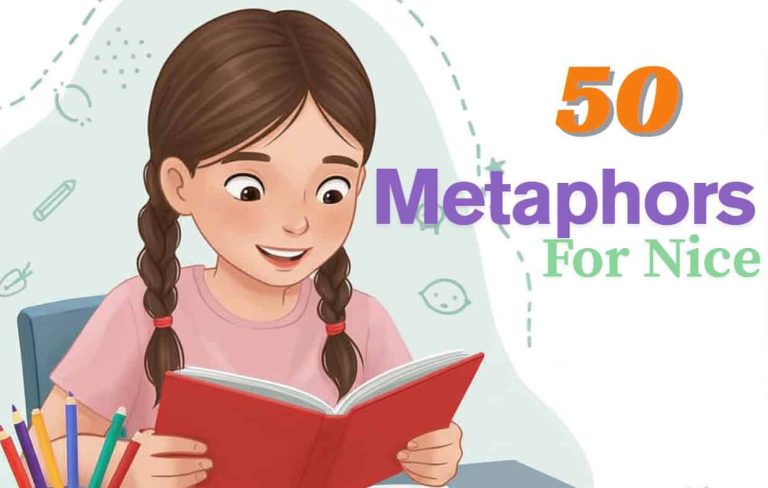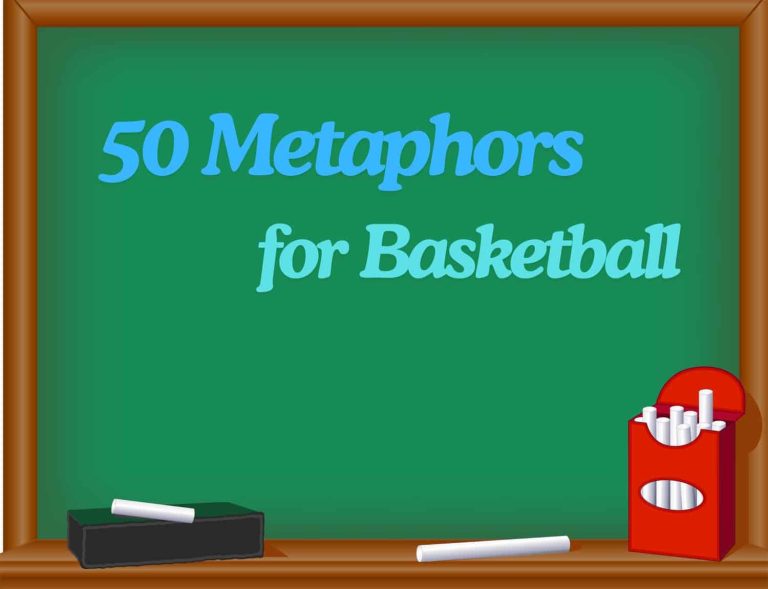Metaphors for Family: 50+ Heartfelt Examples and Meanings
Metaphors are powerful tools in the English language, allowing us to understand abstract concepts by comparing them to more concrete ones. When we talk about family, metaphors often come into play, shaping our understanding of relationships, roles, and dynamics.
Family is one of the most profound and personal aspects of our lives, and finding the right words to describe it can be both meaningful and challenging. That’s where metaphors come in. Metaphors for family help us express the deep emotional bonds, shared experiences, and unique dynamics that define our closest relationships.
Whether it’s describing a family as a tree with strong roots, a team working together through life’s challenges, or a blanket offering warmth and comfort, these comparisons can beautifully capture what family means to us.
Today, we’ll explore a variety of metaphors that illustrate the essence of family in creative and relatable ways. From poetic to practical, these metaphors can enrich your writing, speeches, or personal reflections, helping you communicate the love, support, and connection that family brings.
Definition of Metaphor for Family
A metaphor is a figure of speech that directly compares two unrelated things, asserting that one thing is another to highlight a shared quality or characteristic. In the context of family, metaphors are used to describe the complex relationships, roles, and dynamics within a family unit by comparing them to something else.
For example, saying “Our family is a well-oiled machine” doesn’t mean that the family is literally a machine, but it suggests that the family members work together efficiently and harmoniously, like the parts of a machine. Metaphors for family can be classified based on the type of comparison they make. They can describe the family’s structure, its function, the roles of individual members, or the overall feeling of belonging.
These metaphors are used in various contexts, from literature and poetry to everyday conversations and family therapy. Authors use them to create rich characterizations and explore complex themes. Therapists might use them to help families understand their patterns of interaction. In everyday conversations, we use them to express our feelings about our families in a more colorful and engaging way.
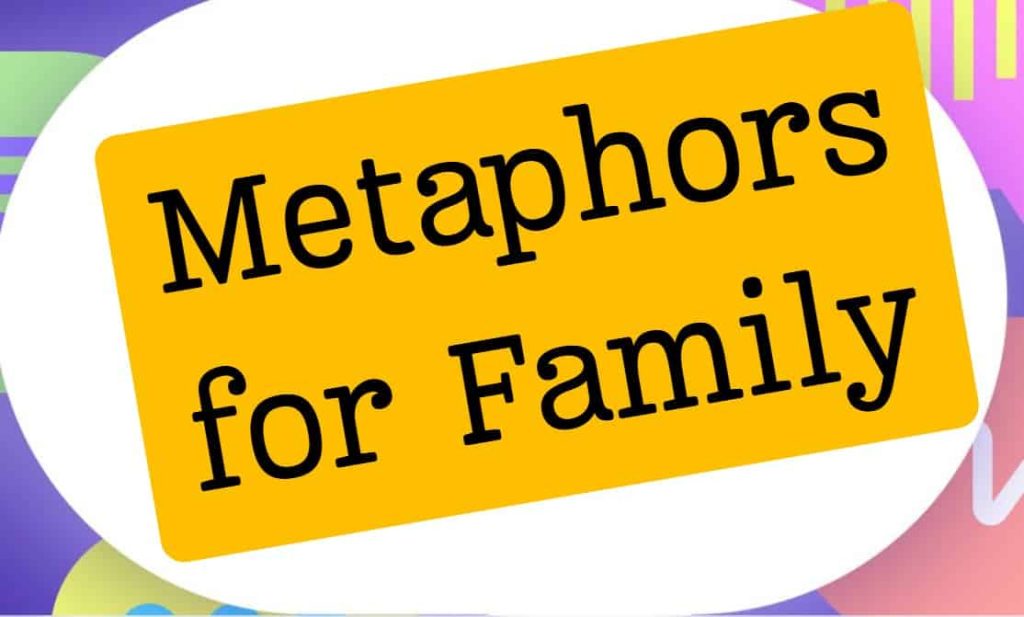
Examples of Family Metaphors With Types
Here are some examples of family metaphors organized by category:
Family as a Tree
This is a very common metaphor, with the roots representing ancestors, the trunk representing the core family unit, and the branches representing descendants or different family lines. The strength and health of the tree symbolize the family’s resilience and well-being. The leaves represent individual family members, growing and changing with the seasons.
The following table provides a variety of examples using the “Family as a Tree” metaphor. Each example highlights different aspects of the family, connecting them to the imagery of a tree.
| Metaphor | Explanation |
|---|---|
| “Our family tree has deep roots in this community.” | Implies a long history and strong connection to the local area. |
| “He is a chip off the old block, a branch from the same tree.” | Suggests that the person is similar to their parent or ancestor. |
| “The family’s branches spread far and wide across the globe.” | Indicates that the family members are dispersed geographically. |
| “She is the sturdy trunk of our family, always providing support.” | Suggests that the person is a strong and reliable figure in the family. |
| “The family’s roots are watered by traditions and shared values.” | Highlights the importance of traditions in maintaining family unity. |
| “He’s a young sapling, still growing and learning in the family garden.” | Indicates someone young and still developing within the family structure. |
| “The family weathered the storm, like a strong tree in the wind.” | Highlights the family’s resilience during difficult times. |
| “She’s the fruit of our family’s labor, a successful and accomplished member.” | Suggests the person is the result of the family’s hard work and dedication. |
| “The family’s history is etched into the rings of our family tree.” | Indicates a rich and well-documented family history. |
| “Like a tree providing shelter, our family offers comfort and security.” | Highlights the family’s role in providing safety and support. |
| “He’s the family’s black sheep, a branch that grew in a different direction.” | Suggests someone who doesn’t conform to family norms. |
| “The family’s branches are intertwined, representing our close relationships.” | Indicates strong connections and interdependence among family members. |
| “Our family is like a forest, each tree unique but part of the same ecosystem.” | Highlights the diversity and interconnectedness of family members. |
| “The family’s leaves may fall, but the roots remain strong.” | Suggests that even as members pass away, the family bond endures. |
| “She’s the budding flower of our family, full of potential and promise.” | Indicates someone young and full of potential. |
| “The family’s tree is pruned with love and discipline, helping it grow strong.” | Highlights the importance of guidance and boundaries in raising children. |
| “Our family tree is a testament to the strength and resilience of our ancestors.” | Emphasizes the enduring legacy of the family. |
| “The family’s branches provide shade and comfort to those in need.” | Suggests that the family is caring and supportive of others. |
| “He’s the sturdy oak of our family, always reliable and steadfast.” | Indicates a strong and dependable family member. |
| “The family’s roots are deeply embedded in our cultural heritage.” | Highlights the importance of cultural traditions and values. |
| “Like rings on a tree, each year added to our family history enriches our story.” | Connects the passage of time to the growth and deepening of family history. |
| “The family’s tree stands tall and proud, a symbol of our shared identity.” | Emphasizes the family’s collective pride and sense of belonging. |
| “She is the sunshine that nourishes the leaves of our family tree, bringing joy and warmth.” | Highlights the positive influence and happiness that a family member brings. |
| “Our family is like a sprawling willow tree, with branches that bend but never break.” | Highlights the family’s flexibility and resilience in the face of adversity. |
| “The family’s history is like the grain in the wood, unique and full of character.” | Emphasizes the distinctiveness and rich texture of the family’s past. |
Family as a Unit or Team
This metaphor emphasizes cooperation, support, and shared goals. The family is seen as a single entity working together to achieve a common purpose.
This can be a sports team, a business, or any group that requires teamwork and coordination.
The following table illustrates the “Family as a Unit or Team” metaphor. These examples stress the importance of collaboration, mutual support, and shared objectives within the family.
| Metaphor | Explanation |
|---|---|
| “Our family is a well-oiled machine, each member playing their part.” | Suggests that the family functions smoothly and efficiently. |
| “We’re a team, and we always have each other’s backs.” | Emphasizes mutual support and loyalty within the family. |
| “The family is a ship, and we all need to row in the same direction.” | Highlights the importance of shared goals and cooperation. |
| “They function like a pit crew, each knowing their role and executing it perfectly.” | Indicates specialized roles and efficient teamwork. |
| “Our family is a finely tuned orchestra, playing in perfect harmony.” | Suggests that the family members work together seamlessly and beautifully. |
| “We’re a relay team, passing the baton of responsibility to each other.” | Highlights shared responsibilities and mutual support. |
| “The family is a puzzle, and each member is a unique piece that fits perfectly.” | Emphasizes the importance of each individual in the family unit. |
| “Our family is like a construction crew, building a strong and lasting legacy.” | Suggests that the family is working together to create something meaningful. |
| “We’re a support system, always lifting each other up when we fall.” | Highlights the family’s role in providing emotional support. |
| “Our family is like a band, each member bringing their unique talents to the stage.” | Emphasizes the diversity of skills and contributions within the family. |
| “We’re a close-knit unit, always working together towards a common goal.” | Indicates a strong sense of unity and shared purpose. |
| “The family is a team of explorers, venturing into the unknown together.” | Suggests that the family is adventurous and supportive of each other’s endeavors. |
| “Our family is like a sports team, celebrating victories and supporting each other through losses.” | Highlights the importance of shared experiences and mutual encouragement. |
| “We’re a well-coordinated dance troupe, moving in sync and supporting each other’s steps.” | Emphasizes collaboration and mutual support in achieving goals. |
| “Our family is like a symphony, with each instrument playing a vital role in the overall harmony.” | Suggests that each family member contributes uniquely to the family’s well-being. |
| “The family works like a swarm of bees, each contributing to the hive’s success.” | Highlights the collaborative effort and collective success of the family. |
| “Our family is a chain, only as strong as its weakest link, so we support each other.” | Emphasizes the importance of supporting vulnerable family members. |
| “We’re a team of chefs, each contributing a unique ingredient to the family recipe.” | Highlights the diversity of talents and contributions within the family. |
| “Our family is like a rowing crew, paddling in unison to reach our destination together.” | Suggests coordinated effort and shared goals in achieving success. |
| “We’re a team of climbers, roped together, helping each other reach the summit.” | Emphasizes mutual support and shared success in overcoming challenges. |
| “Our family is like a jazz ensemble, improvising and harmonizing to create something beautiful.” | Highlights creativity, adaptability, and collaboration within the family. |
| “We’re a team of sailors, navigating the seas of life together, weathering storms and enjoying calm waters.” | Suggests shared experiences, resilience, and mutual support in facing life’s challenges. |
| “Our family is like a circus troupe, each member showcasing unique talents and supporting each other’s acts.” | Emphasizes diversity, individual strengths, and mutual support within the family. |
| “We’re a team of gardeners, each tending to our individual plants but contributing to the beauty of the whole garden.” | Highlights individual contributions and collective well-being within the family. |
| “Our family is like a flock of birds, flying in formation, protecting each other and reaching our destination together.” | Suggests unity, mutual protection, and shared goals in navigating life’s journey. |
Family as a Foundation
This metaphor highlights the idea that the family provides a stable and secure base for its members. It suggests that the family is the bedrock upon which individuals build their lives.
The strength and stability of the foundation are crucial for the well-being of the entire structure.
| Metaphor | Explanation |
|---|---|
| “Our family is the bedrock upon which I’ve built my life.” | Suggests that the family provides a strong and stable base. |
| “They are the foundation of my strength and resilience.” | Emphasizes the family’s role in providing emotional support. |
| “The family provides a solid foundation for our children’s future.” | Highlights the importance of the family in shaping the next generation. |
| “Our family is the cornerstone of our community, always there to support others.” | Indicates that the family is a strong and reliable presence in the community. |
| “The family is a fortress, protecting us from the storms of life.” | Suggests that the family provides a safe and secure haven. |
| “We built our lives on the foundation of love and trust.” | Highlights the importance of these values in creating a strong family unit. |
| “The family is the scaffolding that supports us as we reach new heights.” | Emphasizes the family’s role in helping members achieve their goals. |
| “Our family is the anchor that keeps us grounded in times of uncertainty.” | Suggests that the family provides stability and security. |
| “The family is the root system that nourishes our growth.” | Highlights the family’s role in supporting personal development. |
| “Our family is the compass that guides us through life’s journey.” | Suggests that the family provides direction and purpose. |
| “We are cemented together by the strong foundation of our shared history.” | Indicates a lasting bond created through shared experiences. |
| “The family is a bridge, connecting us to our past and guiding us to our future.” | Highlights the family’s role in linking generations and guiding future paths. |
| “Our family is the bedrock of our values, shaping our beliefs and actions.” | Suggests that the family instills core principles and moral guidance. |
| “The family is a lighthouse, guiding us safely through the storms of life.” | Emphasizes the family’s role in providing safety and direction. |
| “The family is the shield that protects us from the harsh realities of the world.” | Suggests that the family provides protection and support. |
| “Our family is the keystone, holding the arch of our lives together.” | Highlights the family’s role in maintaining stability and cohesion. |
| “The family is a tapestry, woven with threads of love, loyalty, and shared experiences.” | Emphasizes the richness and complexity of family relationships. |
| “Our family is the cornerstone of our identity, shaping who we are and what we stand for.” | Suggests that the family is integral to our sense of self. |
| “The family is the bedrock of our community, providing stability and support to those around us.” | Highlights the family’s role in contributing to the well-being of the community. |
| “Our family is the foundation upon which we build our dreams, providing the strength and support we need to succeed.” | Emphasizes the family’s role in fostering ambition and providing the resources to achieve goals. |
| “The family is the bedrock of our culture, preserving traditions and passing them down to future generations.” | Suggests that the family is essential for maintaining cultural heritage. |
| “Our family is the foundation upon which we build our character, instilling values of honesty, integrity, and compassion.” | Highlights the family’s role in shaping moral and ethical development. |
| “The family is a reservoir of love and support, always there to replenish our spirits and lift us up when we’re down.” | Emphasizes the family’s role in providing emotional sustenance and encouragement. |
| “Our family is the bedrock of our society, providing the stability and cohesion that holds us together.” | Suggests that the family is essential for maintaining social order and harmony. |
| “The family is the foundation upon which we build our future, providing the resources and opportunities we need to thrive.” | Highlights the family’s role in enabling future success and prosperity. |
Usage Rules for Family Metaphors
When using family metaphors, there are several rules to keep in mind to ensure clarity and effectiveness:
- Be clear and specific: Choose metaphors that are easily understood and directly relate to the quality or characteristic you want to emphasize. Avoid vague or ambiguous metaphors that could be misinterpreted.
- Consider the context: The appropriateness of a metaphor depends on the context. A metaphor that works well in a poem may not be suitable for a formal speech.
- Avoid clichés: Overused metaphors can lose their impact. Try to come up with fresh and original comparisons that will engage your audience.
- Be sensitive: Be mindful of cultural differences and personal sensitivities. A metaphor that is meaningful to one person may be offensive to another.
- Maintain consistency: If you use a metaphor, stick with it throughout your writing or conversation. Mixing metaphors can create confusion and weaken your message.
For example, instead of saying “Our family is like a box of chocolates” (a common cliché), you could say “Our family is a vibrant mosaic, each member contributing a unique tile to the overall design.” This is a more original and evocative metaphor that conveys the idea of diversity and interconnectedness.
Common Mistakes with Family Metaphors
Here are some common mistakes people make when using family metaphors:
- Mixing metaphors: Combining two or more unrelated metaphors in a way that creates confusion or absurdity.
- Incorrect: “Our family is a well-oiled machine that’s also a sinking ship.”
- Correct: “Our family is a well-oiled machine, each member playing their part.” or “Our family is like a ship navigating rough waters, but we’re all working together to stay afloat.”
- Using clichés: Relying on overused metaphors that lack originality and impact.
- Incorrect: “Our family is like a box of chocolates.”
- Correct: “Our family is a close-knit quilt, each patch representing a cherished memory.”
- Being too vague: Using metaphors that are too general or abstract to convey a clear meaning.
- Incorrect: “Our family is a thing.”
- Correct: “Our family is a haven, a place where we can always find comfort and support.”
- Being insensitive: Using metaphors that are offensive or inappropriate in the given context.
- Incorrect: (In a family that has experienced loss) “Our family is a complete puzzle.”
- Correct: “Our family is a work in progress, constantly evolving and adapting.”
Practice Exercises
Exercise 1: Identifying Metaphors
Identify the metaphor in each sentence and explain what it means.
| Question | Answer |
|---|---|
| 1. My mother is the sun of our family, always bringing warmth and light. | Metaphor: “mother is the sun.” Meaning: The mother provides warmth, happiness, and energy to the family. |
| 2. Our family is a garden, and each member is a unique flower. | Metaphor: “family is a garden.” Meaning: The family requires nurturing and care, and each member is distinct and beautiful. |
| 3. He is the rock of our family, always providing stability and support. | Metaphor: “He is the rock.” Meaning: He is a strong, reliable, and unwavering presence in the family. |
| 4. The family is a ship, sailing through the sea of life together. | Metaphor: “family is a ship.” Meaning: The family is navigating life’s challenges and adventures as a unit. |
| 5. Our family history is a tapestry woven with stories of love, loss, and resilience. | Metaphor: “family history is a tapestry.” Meaning: The family history is rich, complex, and interconnected, made up of various experiences. |
| 6. She is the glue that holds our family together. | Metaphor: “She is the glue.” Meaning: She is the person who keeps the family connected and united. |
| 7. Our family is a puzzle, each member a unique piece that fits perfectly. | Metaphor: “family is a puzzle.” Meaning: Each member is essential and contributes to the completeness of the family. |
| 8. The family is a bridge, connecting us to our past and guiding us to our future. | Metaphor: “family is a bridge.” Meaning: The family links generations and helps us navigate life’s journey. |
| 9. Our family is a symphony, each member playing a unique instrument in harmony. | Metaphor: “family is a symphony.” Meaning: Each member contributes their unique talents and skills to create a harmonious whole. |
| 10. The family is a tree, with roots that run deep and branches that reach far and wide. | Metaphor: “family is a tree.” Meaning: The family has a long history and strong connections, with members spread across different locations. |
Complete the following sentences with appropriate family metaphors.
| Question | Answer |
|---|---|
| 1. Our family is like a __________, always providing warmth and comfort. | hearth |
| 2. He is the __________ of our family, always making us laugh. | comedian |
| 3. The family is a __________, working together to achieve a common goal. | team |
| 4. My sister is the __________ of our family, always encouraging us to pursue our dreams. | cheerleader |
| 5. Our family is a __________, each member contributing their unique talents and skills. | band |
| 6. The family is a __________, providing a safe and secure haven for its members. | fortress |
| 7. She is the __________ of our family, always organizing and planning events. | coordinator |
| 8. Our family is a __________, navigating the ups and downs of life together. | rollercoaster |
| 9. He is the __________ of our family, always providing wise counsel and guidance. | advisor |
| 10. The family is a __________, each member connected by strong bonds of love and loyalty. | chain |
Identify and correct the mistakes in the following sentences.
| Question | Answer |
|---|---|
| 1. Our family is a well-oiled machine that’s also a rollercoaster. | Corrected: Our family is a well-oiled machine, each member playing their part efficiently. |
| 2. My brother is a thing in our family. | Corrected: My brother is the jokester of our family, always making us laugh. |
| 3. Our family is like a box of chocolates and a ship sailing through the sea. | Corrected: Our family is like a ship sailing through the sea, navigating life’s challenges together. |
| 4. She is the glue that holds our family together, but also a black sheep. | Corrected: She is the glue that holds our family together, always connecting and supporting us. |
| 5. Our family is a rock and a garden at the same time. | Corrected: Our family is like a garden, each member nurtured to grow strong like a rock. |
| 6. He is the sun and the moon of our family. | Corrected: He is the sun of our family, always bringing warmth and light. |
| 7. Our family is a puzzle and a team. | Corrected: Our family is a team, each member a unique piece that fits perfectly into the puzzle of our lives. |
| 8. She is the anchor and the wind of our family. | Corrected: She is the anchor of our family, providing stability and security. |
| 9. Our family is a tree and a home. | Corrected: Our family is like a tree, providing shelter and a sense of belonging, like a home. |
| 10. He is the bridge and the wall of our family. | Corrected: He is the bridge of our family, connecting us to our past and guiding us to our future. |
Frequently Asked Questions
What is the difference between a metaphor and a simile?
A metaphor directly equates two things, while a simile uses “like” or “as” to make a comparison. For example, “Our family is a fortress” (metaphor) vs. “Our family is like a fortress” (simile).
Why are metaphors important in language?
Metaphors make abstract concepts more understandable and relatable by comparing them to concrete things. They add color and depth to language, making it more engaging and memorable.
How can I improve my ability to use metaphors?
Practice identifying metaphors in everyday language, reading widely, and experimenting with different comparisons. Pay attention to the qualities you want to emphasize and choose metaphors that effectively convey those qualities.
Are some metaphors culturally specific?
Yes, metaphors can be influenced by cultural values and traditions. A metaphor that is meaningful in one culture may not resonate in another. For example, the concept of family as a “rice bowl” is common in some Asian cultures, representing shared resources and collective responsibility.
Can metaphors be overused?
Yes, overuse of metaphors, especially clichés, can diminish their impact. Aim for originality and choose metaphors that are fresh and engaging.
How do metaphors help in understanding family dynamics?
Metaphors provide a framework for understanding complex relationships and roles within a family. They can highlight strengths, weaknesses, and patterns of interaction.
What are some examples of negative family metaphors?
Examples include “Our family is a battlefield,” “Our family is a prison,” or “Our family is a house of cards.” These metaphors suggest conflict, confinement, or instability.
How can I use metaphors in family communication?
Use metaphors to express your feelings and ideas in a creative and engaging way. Choose metaphors that are appropriate for the situation and that resonate with your family members. For example, you might say, “Let’s work together like a team to solve this problem.”
Can a metaphor change over time?
Yes, the meaning and relevance of a metaphor can evolve over time as cultural and societal contexts shift. What was once a powerful and insightful comparison may become outdated or lose its impact as society changes.
Conclusion
Metaphors are a powerful tool for understanding and expressing the complex dynamics of family. By comparing family to various concepts like trees, teams, foundations, and journeys, we gain deeper insights into the roles, relationships, and values that define this fundamental unit of society.
Understanding the structure, types, and usage rules of family metaphors enhances our ability to communicate effectively, appreciate literature, and navigate the complexities of family life.
As you continue to explore the world of figurative language, remember that the most effective metaphors are those that resonate with your own experiences and perspectives, providing a unique and meaningful lens through which to view the world.

